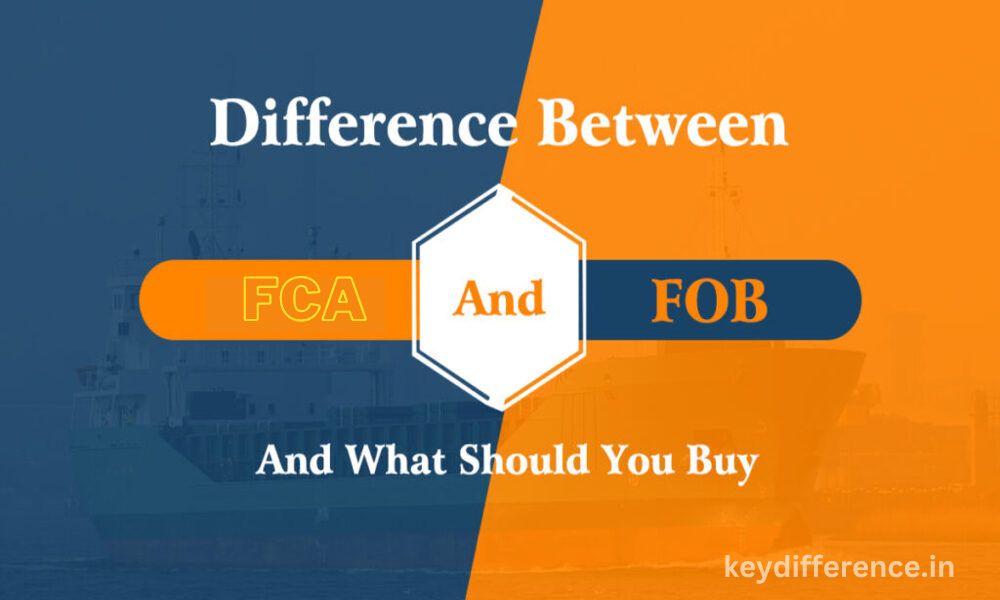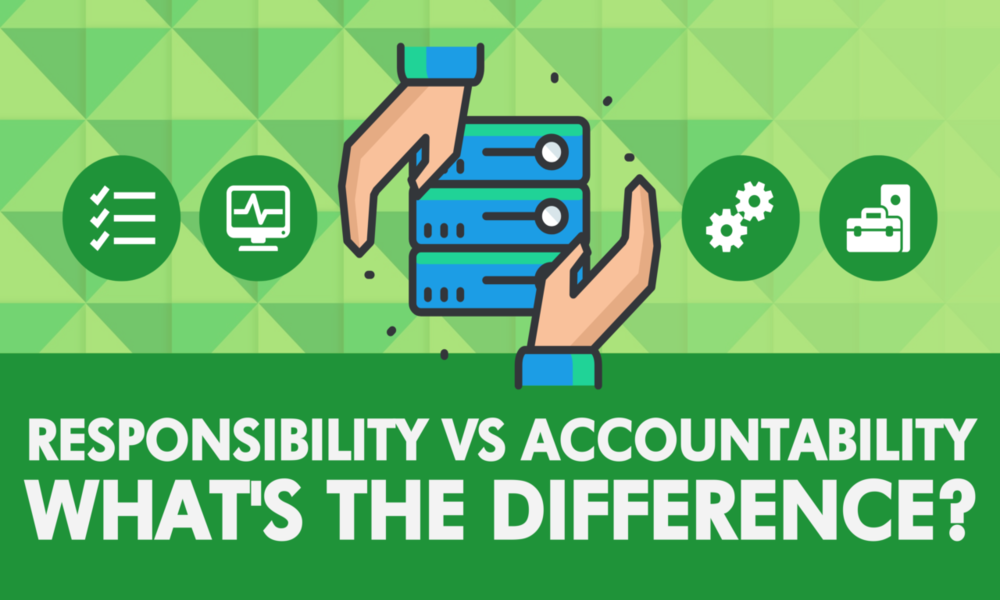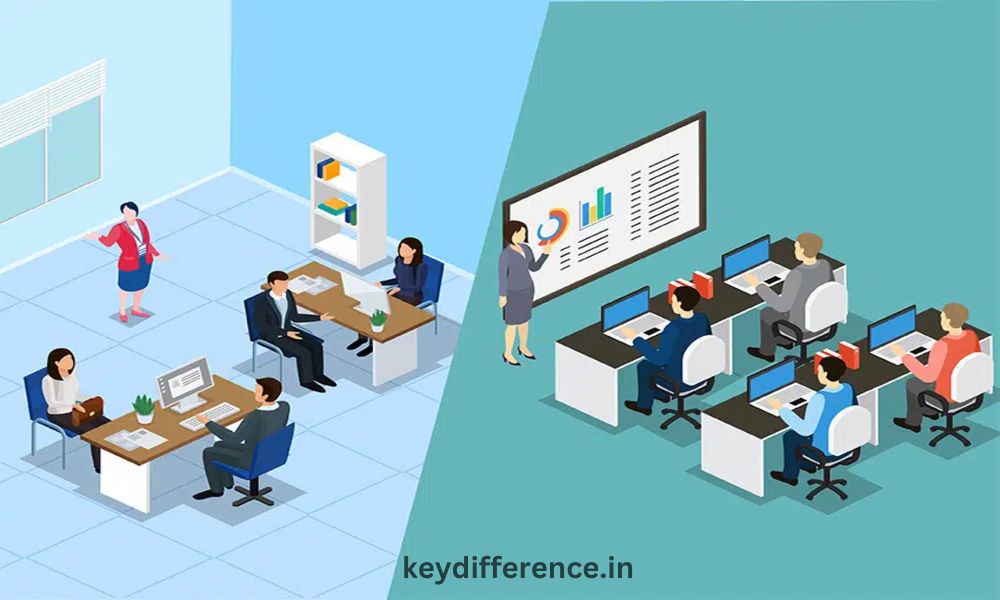Introduction of FOB and FCA
Incoterms are most famous for the terms Free on Board (FOB) and Free Carrier. They are commercial terms that define both the buyer’s and seller’s obligations in a transaction. The term FOB can also be used to describe inland waterway transportation.
The risk of loss or damage to goods is transferred to the buyer when goods reach a ship’s rail at the port of shipment. With FCA, the risk transfers when goods reach a carrier’s delivery location.
Definition of FOB
FOB can be used for seaborne shipments, but also inland waterway shipments.
The seller is responsible for loading the goods onto the ship. After the goods pass through the rails of the ship, any risks or costs associated with the goods are the responsibility of the buyer.
This is an example of using FOB to describe a contract:
- Seller agrees to sell 100 widgets, and buyer agrees they will be purchased FOB Seller’s New York City warehouse.
Seller is responsible for loading widgets onto a ship. Once the widgets pass the rail of the ship, the widgets become the responsibility of buyer.
FOB can be a great option for sellers who are experienced and want to minimize their risk. This is a great choice for buyers who would like to have control over the goods but accept the risk that they may get damaged or lost once the goods pass through the ship rail.
Definition of FCA
“Free Carrier” is the term. The Incoterm commercial term is used to define both the obligations of the buyer and seller when making a sale abroad. Free Carriers are applicable to all modes, such as air, rail, road, and sea.
The seller is responsible to deliver goods to the carrier and pay for transportation costs. After the goods have been delivered to the carrier the buyer is liable for any associated costs or risks.
This is an example of how FCA can be used in a contract:
- The seller agrees to sell 100 widgets, and the buyer agrees purchase them at FCA Seller’s warehouse in New York City.
Once the widgets have been delivered to the carrier, the widgets become the responsibility of buyer.
The FCA option is a great choice for sellers who have little or no experience with shipping and want to retain maximum control of their goods. It is also a good choice for buyers who want to keep control of the goods but are willing to accept any risk once the goods have been delivered to the carrier.
Here are some of the key benefits:
- It can help reduce the cost and risk for the seller.
- It is possible to give buyers the maximum control over their products.
- This Incoterm can be used for any type of transport.
Here are some of the challenges that FCA users face:
- This Incoterm is a bit more difficult to use compared to other Incoterms.
- It can be hard to track the goods once they have been delivered to an agent.
It can be hard to obtain insurance for goods once they have been delivered to the carrier.
Difference Between FOB and FCA
This is a detailed comparison of FOB and FCA:
| Features | FOB | FCA |
|---|---|---|
| Point-of-Risk Transfer | When goods have passed through the ship’s rail | Delivery of goods to the carrier |
| Who is responsible for loading the goods? | Seller | Buy |
| Who pays for loading | Seller | Buy |
| Who pays for transport? | Seller | Buy |
| Who is responsible for customs clearance? | Seller | Buy |
| Insurance: Who’s responsible? | Seller | Buy |
| Flexibility | Flexible | More Flexible |
| Cost | Reduced costs for the seller | The costs for sellers are higher |
| Control | Buyers are less in control | The buyer has more control |
If you’re a seller, your specific circumstances will determine which Incoterm is best. You will reduce your risk and costs by choosing an Incoterm that maximizes your control over the goods.
When deciding whether to choose FOB and FCA, consider these additional factors?
- FOB only applies to seaborne shipments. FCA is applicable to any mode of transport.
- Experience the seller. The FCA option is good if the seller does not have experience shipping goods.
- The buyer’s desire for control. A good choice if the purchaser wants to have more control over the goods is FCA.
Ask a logistics company or freight forwarder for advice on the best Incoterm. They can assess your needs and recommend the right Incoterm.
History of FOB
The term “FOB” was first used on sailing ships. ”
History The term “free on board”, “f.o.b. The term “free aboard” or “f.o.b.” has been used historically to describe a transfer of risk between seller and buyer when goods are shipped. When goods are shipped, the term “free on board” (or “f.o.b.”) was used to indicate a risk transfer between buyer and seller.
The Incoterms 2020 edition includes 11 terms used to determine responsibility for both buyer and seller in an international sale. A common Incoterm is FOB, which is used to describe seaborne shipment.
The seller is responsible for loading the goods onto the ship. After the goods pass through the rails of the ship, any risks or costs associated with the goods are the responsibility of the buyer.
FOB can be a great option for sellers who are experienced and want to minimize their risk. This is a good choice for buyers who would like to have control over the goods but accept the risks of loss or damage once they pass the ship rail.
Here are some of the key benefits that FOB offers:
- It can help reduce the cost and risk for the seller.
- It is possible to give buyers the maximum control over their products.
- This Incoterm can be used for any type of transport.
Here are some of the challenges you’ll face when using FOB.
- This Incoterm is a bit more difficult to use compared to other Incoterms.
- It can be hard to track the goods once they have been delivered to an agent.
It can be hard to obtain insurance for goods once they have been delivered to the carrier.
History of FCA
“FCA” stands for “Free Carrier”. “FCA” is an international commercial term that is used to describe the obligations of the buyer and seller in a foreign sale.
In 1980 the FCA term was introduced, replacing earlier terms FCA, FAS, and Incoterms 2000. Since then, Incoterms 2010 and 2020 have revised the FCA terminology.
The seller is responsible to deliver goods to the carrier and pay for the costs of transportation. After the goods have been delivered to the carrier the buyer is liable for any risks or costs associated with the goods.
The FCA option is a great choice for sellers who have little or no experience with shipping and want to retain maximum control of their goods. It is also a good choice for buyers who want to keep control of the goods but are willing to accept any risk once the goods have been delivered to the carrier.
Here are some of the key benefits:
- It can help reduce the cost and risk for the seller.
- It is possible to give buyers the maximum control over their products.
- This Incoterm can be used for any type of transport.
Here are some of the challenges that FCA users face.
- This Incoterm is more difficult to use compared to other Incoterms.
- It can be hard to track the goods once they have been delivered to an agent.
- It can be hard to obtain insurance for goods once they have been delivered to the carrier.
Use FCA with caution and consider these factors.
- The mode transportation. You can choose any mode of transportation that suits your needs.
- Experience the seller. The FCA option is good if the seller does not have experience shipping goods.
- The buyer’s desire for control. A good choice if a buyer wants to have more control over the goods is FCA.
Ask a logistics company or freight forwarding firm to help you determine the Incoterm that is best for your situation. They can assess your needs and recommend the Incoterm most suitable for your situation.
FOB in international trade
Yes, FOB stands for “Free on Board”. This is an Incoterm, which is a term that is used in international trade to identify the obligations of the buyer and seller for a sale made abroad.
The seller is responsible for loading the goods onto the ship. After the goods pass through the rails of the ship, any risks or costs associated with the goods are the responsibility of the buyer.
This is an example of a FOB used in a contract:
- Seller agrees to sell 100 widgets, and buyer agrees they will be purchased FOB Seller’s New York City warehouse.
Seller is responsible for loading widgets onto a ship. Once the widgets pass the rail of the ship, the widgets become the responsibility of buyer.
FOB can be a great option for sellers who are experienced and want to minimize their risk. This is a good choice for buyers who would like to have control over the goods but accept the risk that they may get damaged or lost once the goods pass through the ship rail.
Here are some of the key benefits of using FOB:
- It can help reduce the cost and risk for the seller.
- It is possible to give buyers the maximum control over their products.
- This Incoterm can be used for any type of transport.
Here are some of the challenges you’ll face when using FOB:
- This Incoterm is more difficult to use than others.
- It can be hard to track the goods once they have been delivered to an agent.
- It can be hard to obtain insurance for goods once they have been delivered to the carrier.
If you’re a seller, your specific circumstances will determine which Incoterm is best. You will reduce your risk and costs by choosing an Incoterm that maximizes your control over the goods.
When choosing between FOB and other Incoterms, consider these additional factors?
- Only seaborne shipments are eligible for FOB. FCA is applicable to all modes of transportation.
- Experience the seller. The FCA option is good if the seller does not have experience shipping goods.
- The buyer’s desire for control. A good choice if the purchaser wants to have more control over the goods is FCA.
You can consult a logistics company or freight forwarding firm to find the right Incoterm. The company will help you identify your needs and recommend the appropriate Incoterm.
FCA in international trade
Yes. “Free Carrier” is a term that is used to describe the obligations of the buyer and seller in international sales. The FCA applies to all modes, including road, rail, and air.
The seller is responsible to deliver goods to the carrier and pay for transportation costs.
This is an example of how FCA could be used in a contract:
- The seller agrees to sell 100 widgets, and the buyer agrees that they will be purchased from FCA Seller’s warehouse in New York City.
Seller is responsible for delivering the widgets to the carrier at Seller’s warehouse. Once the widgets have been delivered to the carrier, the buyer is responsible.
The FCA option is ideal for sellers who have little or no shipping experience or wish to retain maximum control of their goods. It is also a good choice for buyers that want to have full control over the goods and are willing accept any risk associated with damage or loss after they have handed them to the carrier.
Here are some of the benefits of using FCA:
- It can help reduce the cost and risk for the seller.
- It is possible to give buyers the maximum control over their products.
- This Incoterm can be used for any type of transport.
Here are some of the challenges that FCA users face:
- This Incoterm is a bit more difficult to use compared to other Incoterms.
- It can be hard to track the goods once they have been delivered to an agent.
- It can be hard to obtain insurance for goods once they have been delivered to the carrier.
Use FCA with caution and consider these factors:
- The mode transportation. You can choose any mode of transport that suits your needs.
- Experience the seller. The FCA option is good if the seller does not have experience shipping goods.
- The buyer’s desire for control. A good choice if the purchaser wants to have more control over the goods is FCA.
Ask a logistics company or freight forwarder for advice on the best Incoterm. They can assess your needs and recommend the appropriate Incoterm.
Transfer of Risk and Responsibility
When one party assumes the responsibility and risks of another, it is called a transfer of risk and responsibilities. This can be accomplished by contract, insurance policy or other legal agreements.
There are many reasons for a party wanting to transfer risk and responsibility. An insurer may be able to help a company transfer the risk of injury or damage caused by its products. The business may wish to transfer risk to a third-party logistics company.
The transfer of risk and responsibility is possible in many ways.
The process of transferring risk and responsibility can be complicated. Transferring risk and responsibility is a complex process.
Here’s a list of benefits that come with transferring risk and responsibility:
- Protect yourself against financial loss.
- This technique can help reduce anxiety and stress.
- You may focus on your core business.
- This tool can help you improve your cash flow.
Here are some of the risks that may arise when transferring risk and responsibility:
- It may be difficult to find someone who is willing to accept the risk.
- It may not be possible to transfer risk at high costs.
- The party you transferred risk to may not have the financial means to pay if something goes wrong.
Before transferring risk, consult an insurance professional or attorney.
Point of delivery
A point of delivery is the location where the goods are delivered to the client. This will be stated in the contract between buyer and seller. The PoD can be a physical or virtual location, such as an office or home.
A POD is necessary to determine who will be responsible for the goods once they have been delivered. If the PoD is at the seller’s warehouse, the seller is responsible up until the buyer collects the goods. In the case of a PoD at the buyer’s home or office, the buyer is responsible from the moment the goods are received.
The PoD can affect shipping costs. Shipping will be paid by the seller when the PoD happens at his warehouse. When the PoD takes place at the buyer’s home or office, the buyer is responsible for paying the shipping.
The PoD should be included in any contract and understood its implications on liability and shipping costs.
When selecting a POD, consider these factors:
- The kind of goods that will be delivered. For example, perishable items may need special handling, or to be delivered to a specific location.
- The distance between the seller and the buyer increases the shipping costs
- Buyer’s preferences. Buyer’s preferences. Some buyers would prefer to have their goods delivered to them at home or work, while others would prefer to pick up the items from a store or warehouse.
- The seller’s capabilities. A seller might not be able deliver goods to certain locations, such as a buyer’s home or office.
Use these factors to choose a POD which is convenient for both the buyer and seller. It will also minimize shipping costs.
Final considerations in choosing the appropriate shipping term
When choosing the shipping terms, consider these factors:
- Type of item being sent For example, perishable items may need special handling.
- Distance from the seller to the buyer. Shipping charges are higher for greater distances.
- Buyers’ preferences. Some buyers prefer receiving goods at home or their office, while others prefer picking them up in a store or warehouse.
- The seller’s capabilities. Some sellers may not have the ability to deliver goods to certain locations, such as a buyer’s home or office.
- The risk tolerance of the buyer or seller. Some buyers or sellers are more risk-tolerant.
- The financial capabilities of the buyer or seller. Some buyers or sellers may be more financially capable than others.
By considering the factors below, you can choose the shipping terms that suit the buyer’s and seller’s needs.
Here’s a list of additional tips that will help you select the best shipping term.
- Consult with a freight forwarder or logistics company. Talk to a freight-forwarder or logistics company. These companies will assess your shipping needs and provide recommendations for the best terms.
- Read the Incoterms(r) rules. Incoterms defines the obligations of the buyer and seller when an international sale is made.
- Be clear and concise in your contract. Shipping terms should be clearly stated.
- Get everything in writing, including the shipping conditions. You will avoid future disputes and misunderstandings.







